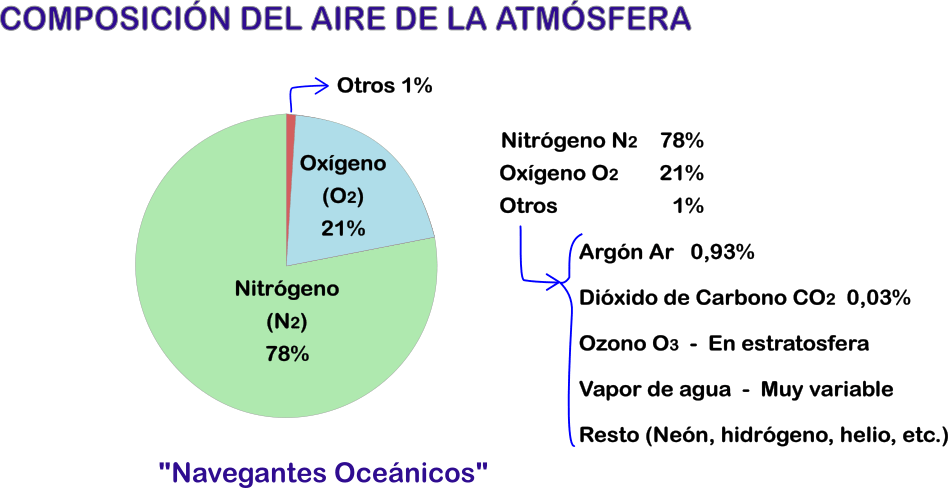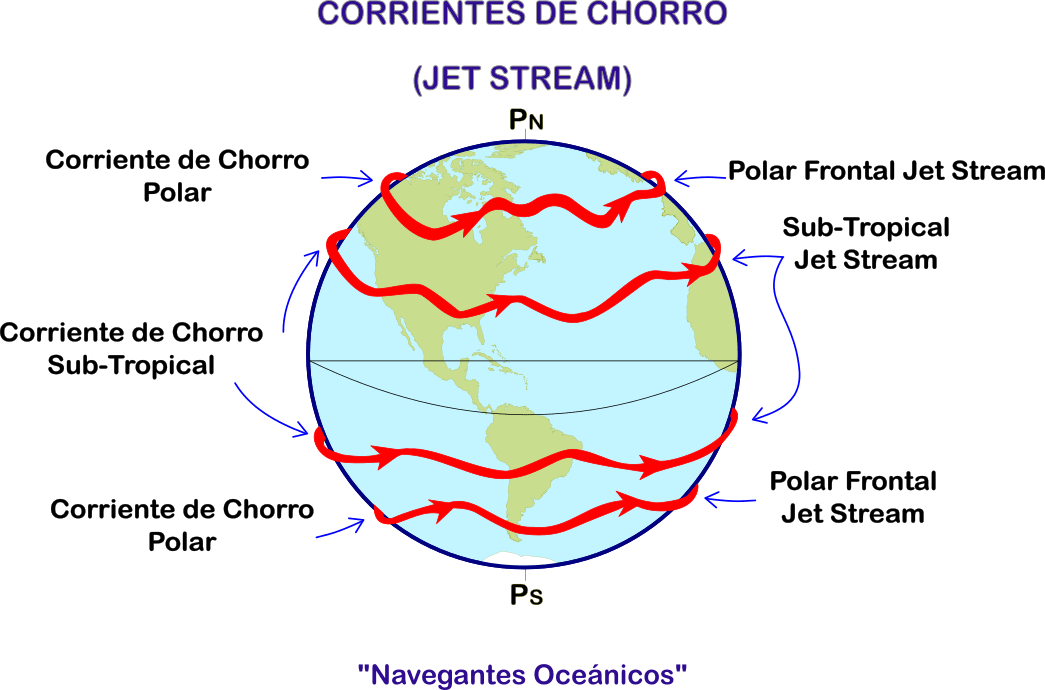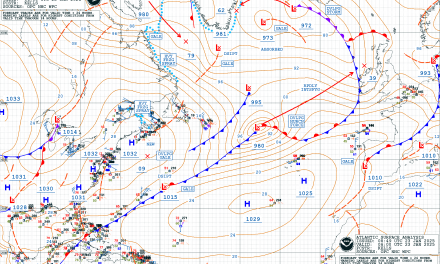Generalities about the atmosphere.
Meteorology will determine many of the decisions made by the navigator, and in many cases the weather can be decisive for the ship’s course. Knowing the more theoretical aspects, such as the generalities about the atmosphere or its general circulation, will allow us to later understand in depth the nature of the different meteorological phenomena that every good skipper or ship captain must master.
In this first chapter of the online book “METEOROLOGY AND OCEANOGRAPHY FOR SAILORS” we will see the elements that make up the air in the atmosphere, and the different layers of the atmosphere (troposphere, stratosphere, mesosphere, etc.) with their main characteristics.
Composition of the atmosphere.
The atmosphere is the gaseous envelope that surrounds the Earth, and “air” is the mixture of gases that compose it. The most significant are nitrogen (78%), oxygen (21%) and argon (almost 1%). Water vapor (H2O), however, is present in a very variable percentage (between 0 and 7%) depending on the humidity.
On the other hand, as altitude increases, atmospheric pressure decreases, as the weight of the air layer is reduced. With lower pressure, there is also less air density. Therefore, the distribution of gaseous mass at altitude is variable, and 75% is concentrated in the first layer of the atmosphere, the troposphere, which we will see below, and which is about 11 km thick.
The atmosphere, in addition to allowing us to breathe, plays a fundamental role in the exchange of heat between the coldest and warmest areas of the earth, through the general circulation of the atmosphere that we will see later. The oceans also contribute significantly to this exchange of heat, without which life on earth would be much more complicated. If the atmosphere did not exist, the average temperature of the earth would be much colder and, in addition, the temperature differences between the poles and the Equator, or between day and night, could reach more than 100 degrees.
The layers of the atmosphere:
TROPOSPHERE:
It is the layer of air that is in contact with the Earth, and its thickness varies from 9 km at the poles, where it is narrowest, to 11 km at mid-latitudes, and up to 16 km wide at the equator.
All the meteorological phenomena that we know (rain, snow, etc.) are concentrated in the troposphere and make up the “weather”, since this layer contains 90% of the water vapour in the entire atmosphere.
The tropopause is a strip that separates the troposphere from the next layer, which is the stratosphere, and in the tropopause there is a thermal inversion of temperatures that begin to increase progressively.
In the vicinity of the tropopause, at about 12 km of altitude, the famous jet streams occur, which are air flows, with winds at speeds between 50 and 160 knots, which always circulate in an easterly direction.
These jet streams are like narrow tubes about 120 to 150 km wide and 8 km thick. Waves occur in the jet streams, which affect the weather situation on the surface and the general circulation of the atmosphere.
There are four (4) jet streams, two in the Northern hemisphere and two in the Southern hemisphere:
– At approximately 60º latitude, the so-called Polar Frontal Jet Stream (PFJ) is formed, which is discontinuous and variable. The maximum speed recorded for the polar jet stream is greater than 250 knots.
– At approximately 30º latitude, the Sub-Tropical Jet Stream (STJ) is formed, with variable winds, which are stronger in winter and decrease in summer.
STRATOSPHERE:
It is the layer above the tropopause, and reaches a height of approximately 50 km. The most significant thing about the stratosphere is that it contains the ozone layer (between 20 and 50 km) which has the property of absorbing a large part of the ultraviolet rays coming from the sun and which are very harmful to the planet.
The stratopause is a strip that separates the stratosphere from the mesosphere, and it is where a new thermal immersion occurs and the temperature begins to decrease.
MESOSPHERE:
The mesosphere reaches up to 80 km in altitude, and the thermal gradient is always negative. At the end of the mesosphere, the atmosphere reaches its lowest temperature (-85º C) and then gradually rises again. This layer now contains only 0.1% of the total mass of air in the atmosphere.
THERMOSPHERE:
This layer reaches up to 500/600 km in height and is called the thermosphere because it is the hottest layer in the atmosphere, where temperatures can exceed 1000º C. The thermosphere is also called the ionosphere because the atoms and molecules that make it up ionize, and these changes in state produce radiation and phenomena such as the polar auroras (aurora borealis and aurora australis).
Furthermore, this ionization produces reflection layers for certain radio waves, which once reflected return to the earth (as we can see in the figure). This phenomenon of radio wave reflection in the ionosphere makes HF (SSB) communications possible between a ship and land stations, over long distances.
EXOSPHERE:
This is the outermost layer of the atmosphere, which connects with interplanetary space. It is composed only of hydrogen and helium. In this layer, magnetic forces are balanced with the force of gravity, and for this reason, geostationary orbits are located, where satellites (including meteorological ones) can rotate while maintaining their relative position with respect to the Earth.
[/ihc-hide-content]








